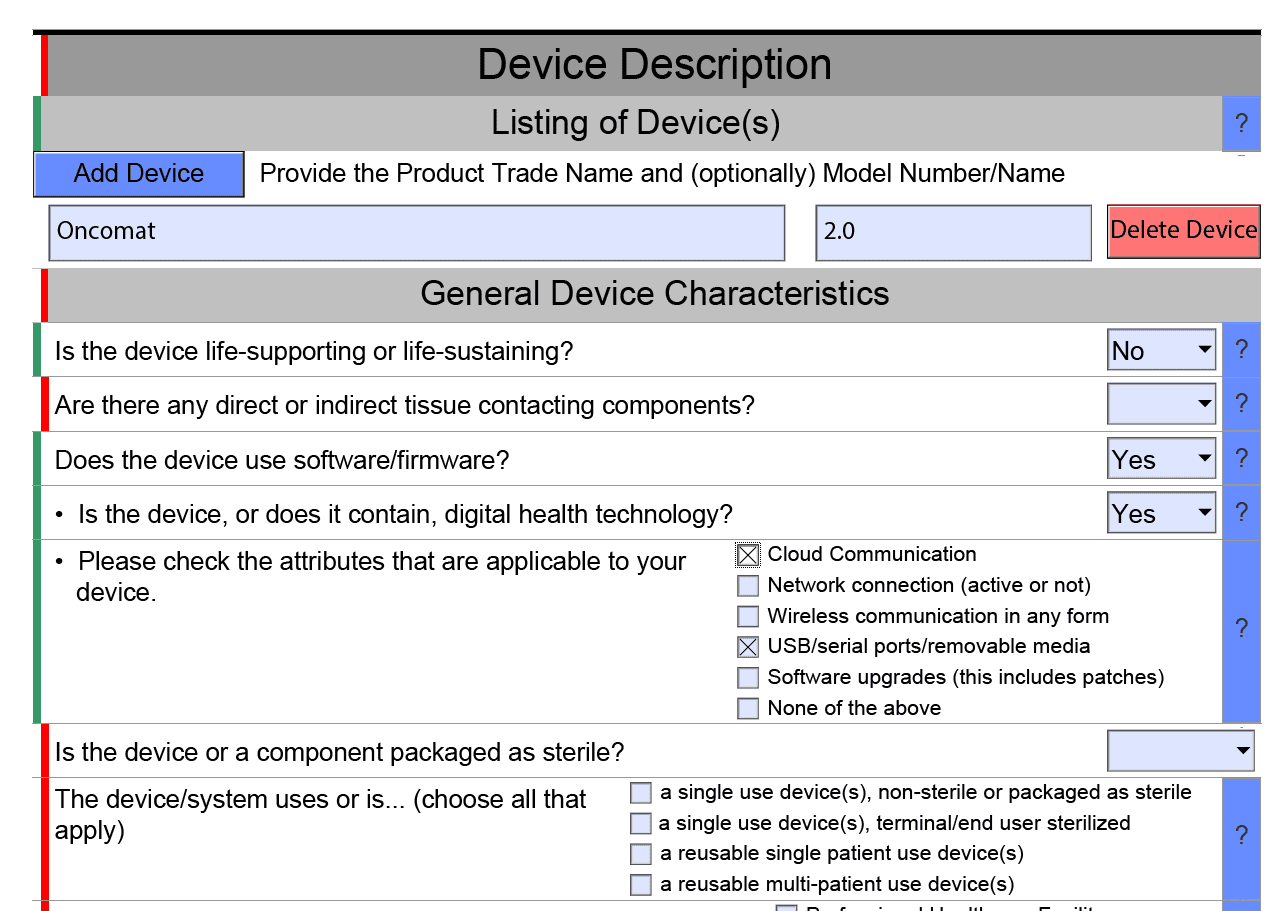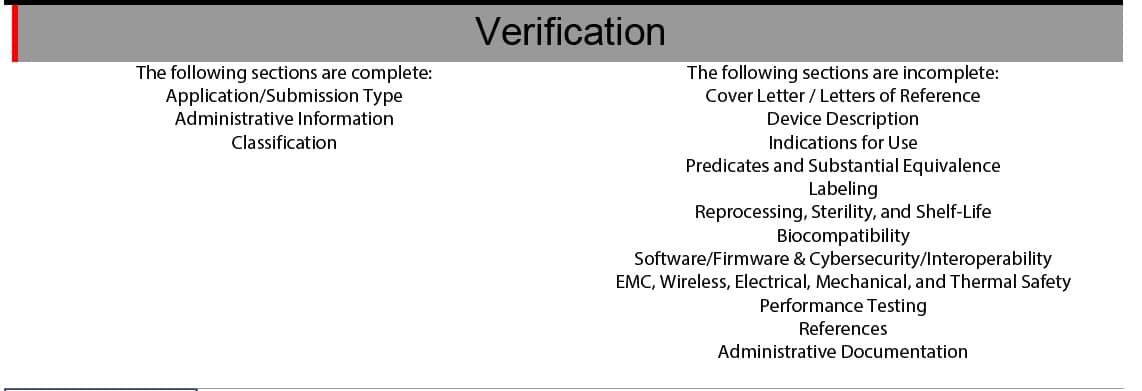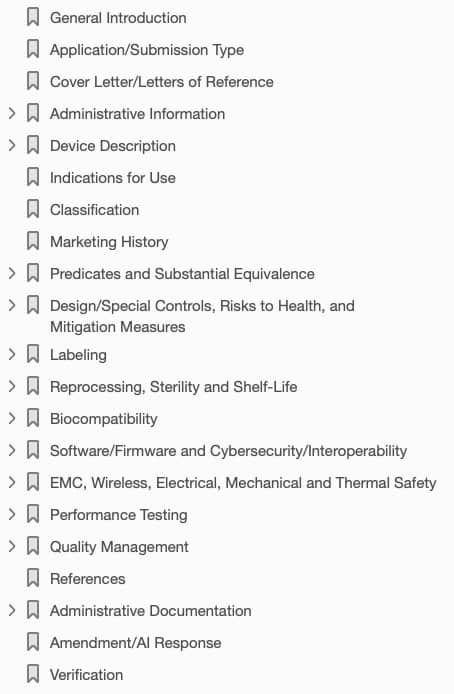With the eSTAR Program, the FDA aims to increase the efficiency of approval procedures (e.g., the 510(k) procedure) through digitalization. The Johner Institute is working with the FDA on the further development of eStar.
This article tells you how forward-looking this approach is and whether you should or even must take part.
1. What is the eSTAR Program?
The eSTAR Program enables medical device manufacturers to submit their approval documents to the FDA via an interactive PDF template.
In its finalized guidance document Electronic Submission Template for Medical Device 510(k) Submissions, the FDA states that, as of October 1, 2023, it will only accept 510(k) submissions in eSTAR format and uploaded via the FDA portal.
The same applies to de novo submissions. According to the guidance document Electronic Submission Template for Medical Device De Novo Requests, these will also only be accepted in eSTAR format from October 1, 2025. This supplements the de novo-specific information such as classification, performance testing, benefit-risk analysis, and mitigation measures.
a) Interactivity
Interactivity has several aspects.
Integrated error checking
The PDF highlights areas that obviously still contain erroneous data in red and correct areas in green (see Fig. 1)

Areas are displayed/hidden automatically
The interactive document displays or hides areas depending on the selection. For example, the document shows details on software documents when it is confirmed that the device contains software or is a standalone software (see Fig. 1). The FDA specifies this logic for fading in and out using Schematron files (see Fig. 2).

Integration of attachments
The PDF enables attachments to be included. From the FDA’s point of view, such attachments must be included. There are no restrictions as far as the data format is concerned but the size of the resulting PDF document is limited to 1 GB (see Fig. 3).

Possibility to import and export
With the exception of attachments, all data can be imported from XML via the PDF and exported to XML.
b) Electronic submission
In the meantime, submissions are no longer made on a physical data carrier but electronically. Depending on the FDA Center responsible, manufacturers submit via the CDRH portal or via the ESG Gateway for CBER-related submissions.
c) eSTAR versus the eCopy
After the eCopy/eSubmitter Program, the eSTAR Program is the next step on the digitalization ladder. In the case of the eCopy/eSubmitter Program, the FDA “only” specified the formatting of the electronic documents submitted, which manufacturers had to adhere to. With the eCopy/eSubmitter Program there is no default document structure or structured data as in the case of the eSTAR Program.
If you would like to know more about the background of these two programs and see a comparison, we recommend you take a look at this guidance document.
2. Who can or should use the eSTAR Program?
The eSTAR Program is obviously aimed at helping medical device manufacturers to compile and submit their approval documents faster and to a higher quality. But it is not aimed at all manufacturers and is not suitable for all approval procedures.
The eSTAR Program is only applicable to
- 510(k) approval procedures (traditional, abbreviated, special),
- De Novo approval procedures,
- Pre-submissions,
- medical devices, IVDs, and combination products.
- certain PMA approval proceduers (original, PMA Panel Track Supplements, PMA Real-Time, PMA 180 Day Supplements)
Participation in the eSTAR Program is entirely voluntary (except 510(k)s). This means that manufacturers and devices to whom the procedure is applicable can but do not have to take part.
3. How does the eSTAR Program help?
The eSTAR Program is beneficial both to manufacturers and the FDA.
a) Higher-quality documents
The FDA receives the documents in a higher quality as the PDF helps manufacturers to avoid blatant errors such as missing information or typos (e.g., in product codes). The drop-down lists and simple content checks for completeness and consistency are helpful.
b) Greater reliability
The PDF verifies and highlights incomplete or missing information both in terms of individual pieces of data and the document as a whole (see Fig. 3).

c) Time saving
Manufacturers and the FDA save themselves from going through the RTA correction loop. However, the rest of the process remains unchanged:
The remainder of a 510(k) review will be conducted according to the FDA guidance, “The 510(k) Program: Evaluating Substantial Equivalence in Premarket Notifications [510(k)],” following the procedures identified in 21 CFR 807 subpart E. A De Novo review will be conducted according to the FDA guidance, “De Novo Classification Process (Evaluation of Automatic Class III Designation),” following the procedures identified in 21 CFR 860, subpart D.
The FDA does not have to transfer any contents into its own system by copying and pasting. This also saves time and effort.
Furthermore, the FDA can find the documents faster as contents and attachments can be directly accessed in the same place via the PDF document and because manufacturers are obliged to share attachments in the exact format specified by the FDA. This also saves work. However, it does not promise shorter processing times.
4. Evaluation of the eStar Program
a) Positive
With this program the FDA helps manufacturers to compile better, complete, consistent and correct documents. The FDA itself benefits from this as thanks to the software many preliminary verifications are automated.
This in turn is beneficial to manufacturers as approval processes are faster and, more importantly, unnecessary correction loops (incl. the RTA review) can be avoided.
The structure of the PDF document (see Fig. 4) and the sharing of attachments encourages manufacturers to structure their own documents, both in terms of the documents as a whole and their index as well as the contents of the documents.

b) Criticism
The possibility of an XML import can in the best-case scenario be a bridging solution for transferring information from existing systems into the FDA’s PDF document. Although it is better than manual copying and pasting, it is no match for an API.
The FDA specifies the required attachments. This obliges manufacturers to compile FDA-specific documents which in turn leads to the usual painstaking administrative tasks of Regulatory Affairs managers; tasks that full digitalization of the processes could and should render superfluous.
c) Evaluation and outlook
Thanks to the eSTAR Program, the FDA is clearly a step ahead of many notified bodies and their application forms. Often the latter can neither keep up with functionality nor usability and interoperability (XML import and export).
The interactive PDF is also software that, like all other software, needs to be validated and further developed. So far, updates by the FDA have been very prompt. For example, the new guidance document on software with the distinction between “Basic Documentation” and “Enhanced Documentation” has now been implemented.
5. Conclusion
a) Summary
With the eSTAR Program the FDA has taken the next step toward digitalizing the approval process. It is taking to extremes what can be achieved with a document and PDF-based approach.
The interactivity of the PDF documents with integrated application logic and a combination of structured data and attachments gives us an idea of what is possible with fully-automated collection and verification of approval data.
Until then, manufacturers have to work with documents and observe the following guidance documents:
- the existing guidance document “Providing Regulatory Submissions for Medical Devices in Electronic Format — Submissions Under Section 745A(b) of the Federal Food, Drug, and Cosmetic Act,” even if it is not totally up to date as it was published before the eSTAR Program and does not yet include the program
- more importantly, the newer guidance document “Electronic Submission Template for Medical Device 510(k) Submissions” and guidance document “Electronic Submission Template for Medical Device De Novo Requests.”
The Johner Institute supports manufacturers and notified bodies in their digital transformation. Are you interested? Then contact us now!
Change history:
- 2025-10-02: Note box at the beginning supplemented with a sentence on “de novo content.”
- 2024-10-15: Note on the mandatory use of eSTAR for De Novo Requests from October 1, 2025 added
- 2024-08-20: Assessments moved to the new chapter 4. Numbering implemented consistently; introduction added; chapter 1.a) restructured and image of the Schematron file (Fig. 2) added
- 2023-09-15: Notes on electronic submission and availability of eSTAR for combination products added
- 2022-09-23: Notes on the new eSTAR Guidance document added


